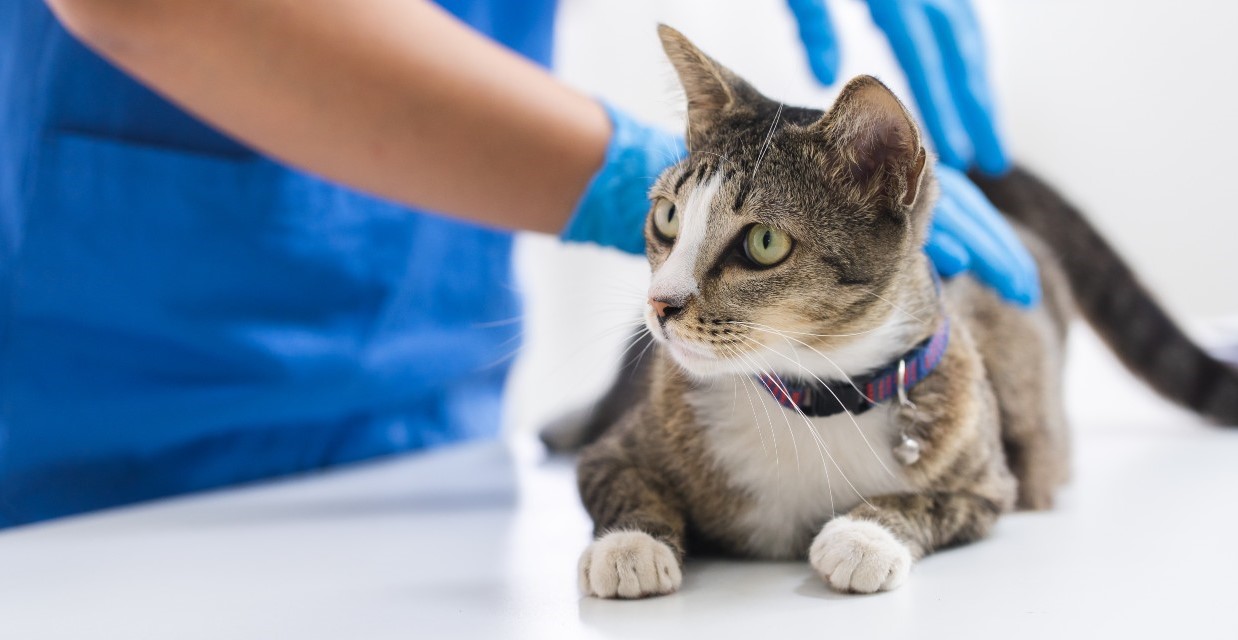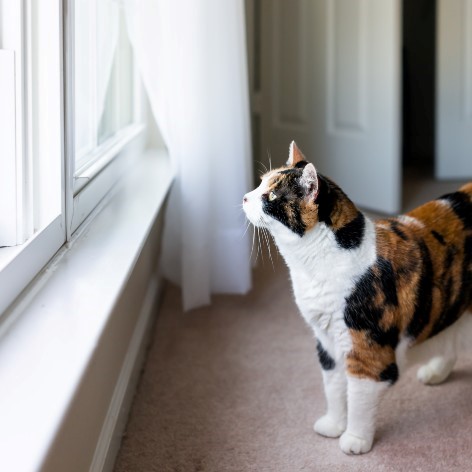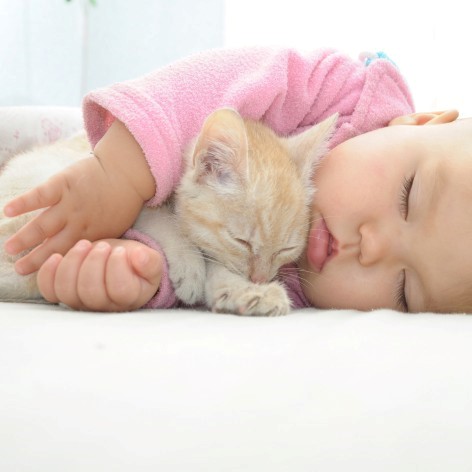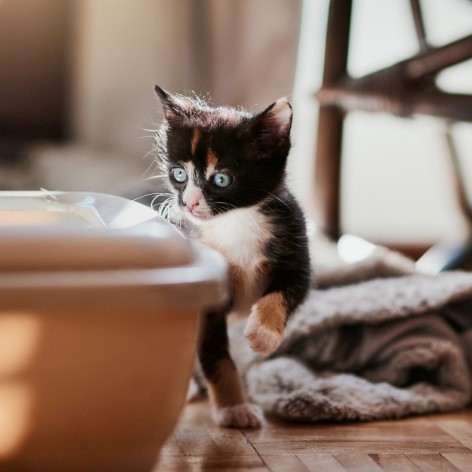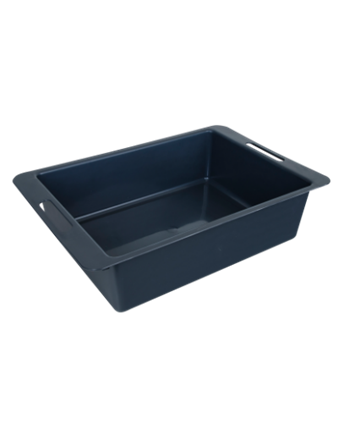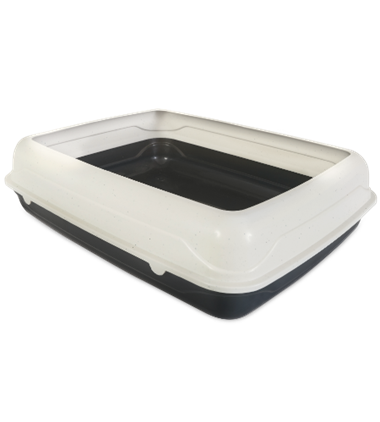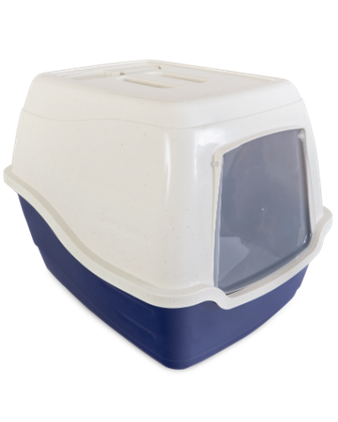Urinary tract disease is painful for cats.
Inflammation within a cat’s urinary tract involves the bladder and the urethra (the thin tube from the bladder to the outside world), and can cause big changes in their behaviour, such as:
- Problems urinating, such as vocalisation, straining, weeing outside of the litter box
- Licking around their bottom a lot
- Loss of interest in their food
- Becoming less playful, less interactive, crying out or seemingly grumpy when picked up
The Lowdown on Feline Idiopathic Cystitis (FIC)
FIC means ‘bladder inflammation’ where the cause is unknown and is the most common urinary tract disease in cats. There’s frustration in the fact that urine tests, blood tests and X-rays don’t point to a cause, but your vet can immediately treat and help manage the condition.
One thing we know, however is that stress may play a role, likely by stimulating the nerves that trigger inflammation of the bladder wall.
Speak to your vet about the possible causes of stress so you can try to minimise it and possibly reduce the recurrence and severity of FIC.
Urethral obstructions
Urethral obstruction, or ‘blocked bladder’, is a life-threatening condition that we should be aware of – especially if your cat is male or has been neutered. Male cats are at a greater risk for urethral obstruction because their urethras (the thin tube through which they urinate, passing from the bladder to the outside world) are longer and narrower than with females.
The urethra becomes blocked by a ‘plug’ of protein and cells from the inflamed bladder wall, and sometimes this plug also contains crystals or larger stones.
Think of crystals as fine grains of sand that can really irritate your cat’s bladder.
If your cat has a blocked urethra, they’ll show signs similar to other urinary tract diseases, but as time goes on, your cat will become increasingly distressed. It’s important to have urethral obstruction cases (or ‘blocked bladders’) seen to by your vet early, because once the urethra is fully blocked, their kidneys won’t be able to remove toxins from the blood and the bladder will fill, and potentially even rupture. Without immediate treatment, the condition can ultimately be fatal.
Treating or managing urinary tract disease
Your first step to getting urinary tract disease diagnosed and treated is seeking vet attention.
Even though cats with urinary tract disease show similar signs, there are many different causes – blockage, FIC, infection, urinary stones, cancer, and so forth. Your vet will give your cat a full physical examination and run urine tests to find out what it is. If the cause isn’t found the first time around, your vet may recommend other tests such as a urine culture, bloods and x-rays.
Whatever is found to be causing your cat’s problem, your vet will work out a plan to solve it.
Most common treatments for cat urinary tract infections:
1. Changing to wet food or Moistening Dry Food
Possibly the most common things you can do to reduce urinary tract disease, is to increase the volume of urine passing through your cat’s bladder. One of the easiest ways to do this is to feed them more of a moist diet. This is particularly important if your vet discovers lots of crystals and/or bladder stones. Having plenty of water available and encouraging them to drink with water fountains and moving water sources is also helpful – as cats can be prone to dehydration which isn’t good for urinary health.
2. Keeping the Litter Box Accessible and Fresh
If your cat uses a litterbox, make sure there are a number of them available. A good rule is to have one more than the number pf cats in the house. This will reduce any stress in your cat, as will keeping the box clean, using litter they like, and placing the box in a safe, quiet area of your home.
3. Trying to Minimise Stress
We know that some stress factors can include new cats in the house or neighbourhood. Changes in the household, family or environment can cause issues too. So it’s important, to be aware of these potential sources of anxiety and to help manage your cat’s environment, allowing them to relax and be their natural selves. A vet or even cat behaviourist can help you work through these ‘stressors’.
4. Repairing the Bladder Lining
Therapy to replace the lining in your cat’s bladder could also help your cat. Urinary supplements containing ‘Glycosaminoglycans’ (or GAGs) aim to support the inner wall of their urinary tract. Be sure to look into these supplements, particularly if your cat has repeat issues.
5. Other Medications
Your cat may need pain-relief, antibiotics, or other medications if they have urinary tract issues. For example, your cat may benefit from drugs to stop urethral spasms and swelling. These will be recommended by your vet if necessary.
Urinary tract disease includes a number of quite serious conditions, this is why we continually refer to your vet for the best advice.. By noticing the symptoms early on, taking good notes and reporting abnormalities early, you’re looking after your cat and ensuring they have the happy, healthy life that they deserve.


